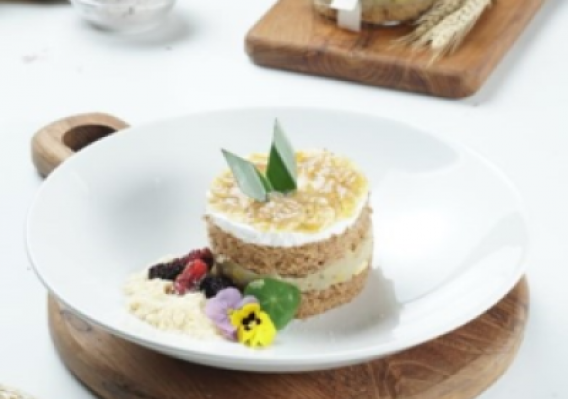Sorghum Kolak Cake, a New Alternative Way to Process Sorghum

Sorghum is one of the cereal products that are widely grown in Indonesia. This type of cereal has a higher vitamin and mineral content than wheat, and even sorghum has a high antioxidant substance. Consuming sorghum can prevent diabetes. Although sorghum's benefits are abundant, its utilization is minimal, and it even ends up as animal feed. This fact attracted the attention of UNY students, who mixed it into sorghum compote cake. She is Tika Nur Affrimawati.
According to the Boga Technical Education study program student, sorghum in her kolak cake aims to reduce the use of wheat flour which has been widely used. "Moreover, the wheat flour used is made from imported wheat so sorghum can reduce the import burden," she said. The Bidikmisi scholarship recipient explained that sorghum has a high-calorie content and contains 8-12% protein equivalent to wheat flour, approximately 70% carbohydrates, 2-6% fat, which means it is equal to wheat flour (2%). In addition, sorghum also contains various types of essential minerals, including phosphorus, magnesium, calcium, iron, zinc, copper, manganese, and molybdenum. Sorghum has an iron content of 7 mg per 100 grams and a zinc content of 5 mg per 100 grams. Sorghum also has a reasonably high antioxidant activity of 40.46%, which means that sorghum can be consumed as a food source of antioxidants for people with diabetes mellitus.
Food from sorghum is one part of the culinary product innovation course. According to the course lecturer, Dr. Badraningsih Lastariwati, sorghum compote cake is suitable to be served as takjil food in the upcoming Ramadhan month because of its sweet taste and attractive appearance than a banana compote. Hopefully, sorghum kolak cake will get the attention of many teenagers who prefer to buy viral and more attractive snacks, packaging, shape, and taste. "This is a breakthrough because kolak is only considered a traditional food so far," concluded Badraningsih.(Author: Dedy, Editor : Sudaryono, Tj.Lak)






